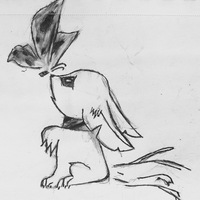
Костя составил высказывания.Некоторые моллинезии - рыбы.Не все рыбы - моллинезии.Никакие моллинезии
- не рыбы.Все моллинезии - рыбы. Сделайте рисунок множества "рыбы" и множества "моллинезии" и найдите истинные высказывания 0
0
 0
0
Ответы на вопрос
 Внимание! Ответы на вопросы дают живые люди. Они могут содержать ошибочную информацию, заблуждения, а также ответы могут быть сгенерированы нейросетями. Будьте внимательны. Если вы уверены, что ответ неверный, нажмите кнопку "Пожаловаться" под ответом.
Внимание! Ответы на вопросы дают живые люди. Они могут содержать ошибочную информацию, заблуждения, а также ответы могут быть сгенерированы нейросетями. Будьте внимательны. Если вы уверены, что ответ неверный, нажмите кнопку "Пожаловаться" под ответом.

 0
0
 0
0

Understanding the Statements
To understand the statements and determine their truth value, let's break them down:1. "Some mollinezzia are fish." 2. "Not all fish are mollinezzia." 3. "No mollinezzia are fish." 4. "All mollinezzia are fish."
Analyzing the Statements
1. "Some mollinezzia are fish." - This statement implies that there are at least a few mollinezzia that are fish. - This statement is true because it does not claim that all mollinezzia are fish, only that there are some mollinezzia that are fish.2. "Not all fish are mollinezzia." - This statement implies that there are fish that are not mollinezzia. - This statement is true because it does not claim that no fish are mollinezzia, only that there are fish that are not mollinezzia.
3. "No mollinezzia are fish." - This statement implies that there are no mollinezzia that are fish. - This statement contradicts statement 1, which states that some mollinezzia are fish. - Therefore, this statement is false.
4. "All mollinezzia are fish." - This statement implies that every mollinezzia is a fish. - This statement contradicts statement 2, which states that not all fish are mollinezzia. - Therefore, this statement is false.
Visualizing the Sets
To visualize the sets "fish" and "mollinezzia," we can use Venn diagrams.Let's assume that the set of all fish is represented by circle A, and the set of all mollinezzia is represented by circle B.
Based on the analysis of the statements, we can represent the relationships between the sets as follows:
1. "Some mollinezzia are fish." - This statement implies that there is an overlap between the sets A and B, indicating that there are mollinezzia that are fish.
2. "Not all fish are mollinezzia." - This statement implies that there are elements in set A that are not in set B, indicating that there are fish that are not mollinezzia.
Based on these representations, we can conclude that statements 1 and 2 are true, statement 3 is false, and statement 4 is false.
Venn Diagram Representation
Here is a visual representation of the relationships between the sets "fish" and "mollinezzia":``` A: Fish _________ / \ | | | | \_________/ B: Mollinezzia ```
In this diagram, the overlapping region represents the mollinezzia that are fish, and the non-overlapping regions represent the fish that are not mollinezzia and the mollinezzia that are not fish.
Conclusion
Based on the analysis and visual representation, the true statements are: - "Some mollinezzia are fish." - "Not all fish are mollinezzia."The false statements are: - "No mollinezzia are fish." - "All mollinezzia are fish."
 0
0
 0
0
Топ вопросов за вчера в категории Математика
Последние заданные вопросы в категории Математика
-
Математика
-
Литература
-
Алгебра
-
Русский язык
-
Геометрия
-
Английский язык
-
Химия
-
Физика
-
Биология
-
Другие предметы
-
История
-
Обществознание
-
Окружающий мир
-
География
-
Українська мова
-
Информатика
-
Українська література
-
Қазақ тiлi
-
Экономика
-
Музыка
-
Право
-
Беларуская мова
-
Французский язык
-
Немецкий язык
-
МХК
-
ОБЖ
-
Психология
-
Физкультура и спорт
-
Астрономия
-
Кыргыз тили
-
Оʻzbek tili





















